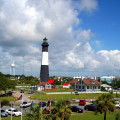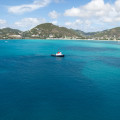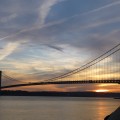Goodbye, My Coney Island Baby
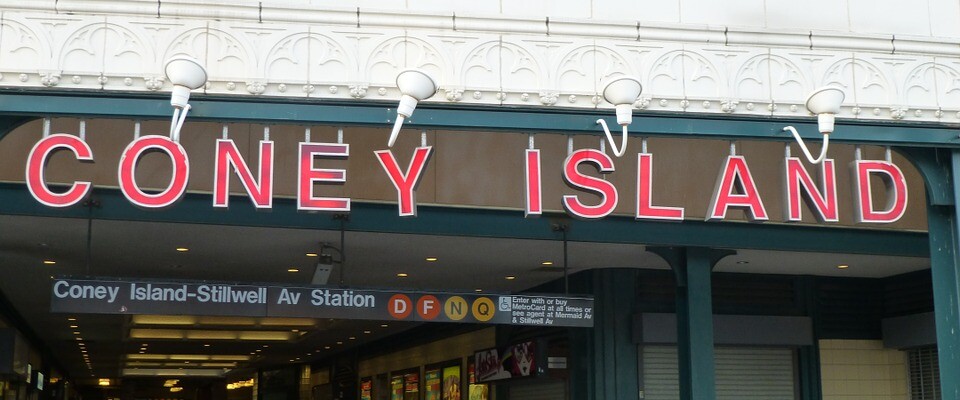
Things to do at Coney Island
Coney Island is a neighborhood in Brooklyn, New York known for its seaside amusement parks, iconic hot dogs, and for hosting one of the oldest operating aquariums in the United States. Coney Island was one of my favorite places to visit when I lived in Brooklyn. Visiting Coney Island is like spending the day at the fair, except admission is free. Even if roller coasters aren’t your thing, Coney Island is the perfect area to enjoy a picnic by the beach, swim in the Atlantic Ocean, grab a bite to eat at one of the many restaurants located along the Riegelmann Boardwalk, window shop or people watch.
You may also want to check out the wildly popular, “Coney Island Freak Show.” Coney Island also holds a summer concert series every year at the Ford Amphitheater at the Coney Island Boardwalk, hosting big names in entertainment, while offering a selection of cheap seats. I have had the opportunity to see two concerts at the Ford Ampitheater at the Coney Island Boardwalk. One year I attended a concert featuring The Temptations & The Four Tops with Mary Wilson and Martha Reeves. I bought the lowest priced ticket ($35) and was treated to three-four hours of classic Motown tunes. I also saw The Avett Brothers perform at the Ford Ampitheater one summer as well. After spending the day like a kid at the fair, Coney Island is guaranteed to leave you with fun memories you’ll cherish forever.
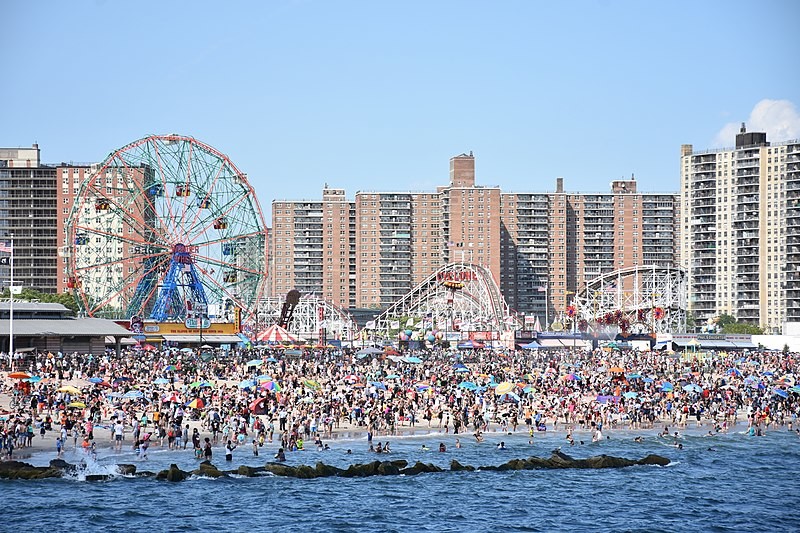
Coney Island as seen from the pier in June 2016 Photo Courtesy MusikAnimal/Wikimedia Commons
European explorer, Giovanni de Verrazzano (the same Verrazzano that the Verrazzano-Narrows Bridge in Bay Ridge, Brooklyn was named after), was the first person to discover Coney Island during his journeys to the area in 1527 and 1529. At that time, the land was known as the island of Narrioch. The name Narrioch was given to the land by the original Native American inhabitants, a group called the Lenape. Narrioch was known to mean “land without shadows” or “always in light,” which described how Narrioch’s “south facing beaches always remained in the sunlight.” A second meaning accredited to the name Narrioch is “point” or “corner of land.” While there is no clear history on how the island was officially named “Coney Island,” a version of the name Coney Island, “Conyne Eylandt,” can be seen on early 17th century Dutch maps. The most popular theory on how Coney Island received its name, came from the fact that the word “conyne” was the old Dutch spelling for rabbit, giving the land the name “Rabbit Island” (as there were a lot of wild rabbits on Coney Island when the Dutch arrived.)
Coney Island would be re-discovered by Dutch explorer, Henry Hudson, in 1609. In the early 17th century, the Dutch would establish the colony of New Amsterdam at present-day Coney Island. As the Dutch settlement expanded, the Native American population started to decrease. The Dutch ended up purchasing the entire southwest section of present-day Brooklyn in 1645 from the Native Americans “in exchange for a gun, a blanket, and a kettle.” In the 1870s and 1880s, many luxury hotels were built on Coney Island and a railroad was lengthened, so guests had an easier way to travel to the area. It was in the late 1800s when Coney Island started to become known as a nice place for a costal getaway and was described as “Heaven at the end of a subway ride.” Eventually, Coney Island had three amusement parks and became known for “having several of the best-known amusement parks in the world.” The parks included Sea Lion Park, Steeplechase Park, Luna Park, and Dreamland. (Sea Lion Park would close after being open for eight years.)
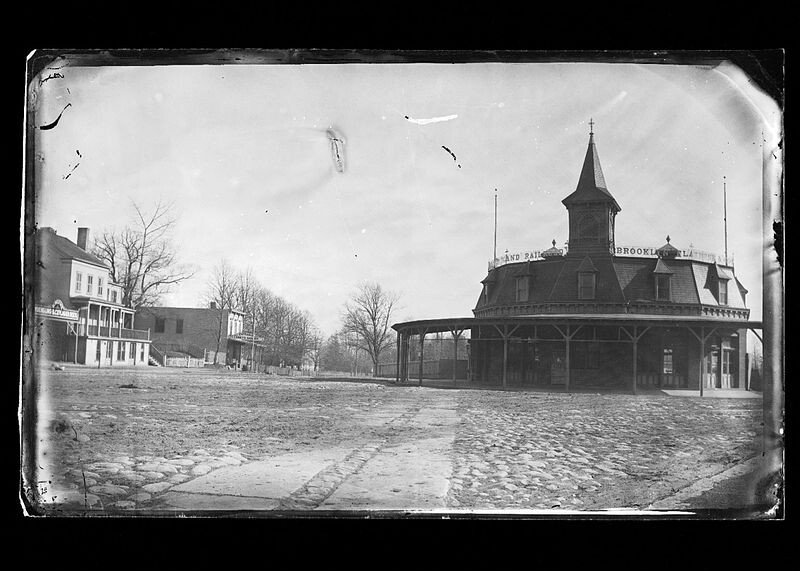
Railroad station in Coney Island, Brooklyn 1872-1887 Photo Courtesy Brooklyn Museum/Flickr Commons/Wikimedia Commons
Coney Island was described as the “Poor Man’s Paradise” because you could get a hot dog or a knish for only a nickel or ride any of the rides in the original three parks for a nickel. Coney Island’s first carousel was completed in 1875 and operated by steam power. The carousel was built by “famed artisan” Charles Looff. Charles Looff (who created an antique carousel as a wedding present for his daughter Emma and was an inspiration for Chuck Kaparich when he created “A Carousel for Missoula” in the late 1980s), carved many of the carousel’s animals by hand. LaMarcus Adna Thompson, who gained experience by building “many of the rides at Portland’s Council Crest Park,” built the “Switchback Railway” in 1884 at Coney Island, which was one of the world’s first roller coasters to be constructed.
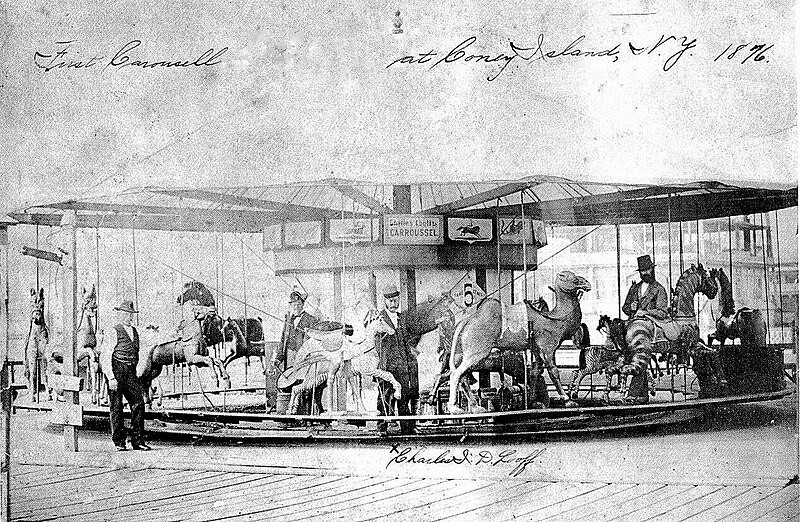
Coney Island 1876 The first carousel and amusement ride at Coney Island was hand-carved and built by Danish carver, Charles I. D. Looff. Photo Credit: Helen Looff Simmons Photo Courtesy Wikimedia Commons

“An admission ticket for Steeplechase Park from 1905. George C. Tilyou’s ‘Funny Face’ logo became the iconic symbol for Coney Island.” Photo Courtesy Wikimedia Commons
In 1895, Sea Lion Park was the first amusement park to open at Coney Island and the park featured many exciting attractions including; Shoot-the-Chutes water slide, an Old Mill Ride, and a Sea Lion Show. Sea Lion Park closed for good in 1902, due to poor weather and financial problems. George Tilyou built Coney Island’s first Ferris wheel in 1894. In 1904, Dreamland opened to record crowds. Astroland opened to the public in 1962 and eventually a new Luna Park opened in 2010. Coney Island has quite the history and has been entertaining crowds for many years. Today, you can get to Coney Island by taking the D, F, N or Q train to the Coney Island-Stillwell Avenue Station in Brooklyn.
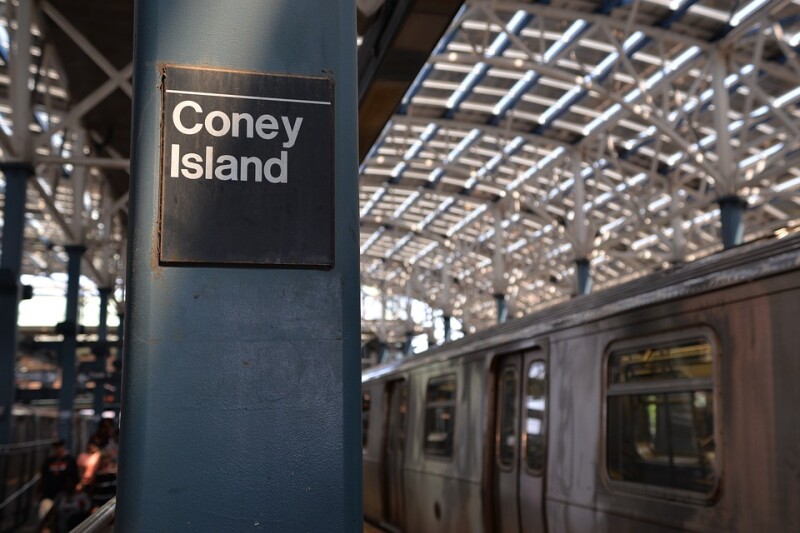
Photo Courtesy Pixabay
The Coney Island Cyclone
The Coney Island Cyclone is a wooden roller coaster, located inside Luna Park in Coney Island. The Cyclone opened up to the public on June 26, 1927. After two rides opened up at Coney Island that were extremely popular and successful (the original Thunderbolt, which opened in 1925 and Tornado, which opened in 1926), Irving and Jack Rosenthal were inclined to buy land at the intersection of Surf Avenue and West 10th Street and design their own roller coaster. Irving and Jack took a $100,000 investment and hired Vernon Keenan (who was the leading roller coaster designer at the time) to design a new ride.
The Cyclone’s total cost was reported to be between $146,000 and $175,000. When the Cyclone opened in 1927, it cost riders 25 cents for one ride (equivalent to $3.68 in 2019.) Irving and Jack Rosenthal starting managing Palisades Amusement Park in New Jersey in 1935. Christopher Feutch, a Coney Island entrepreneur and builder of the 1907 ride Drop the Dip, took over as supervisor over the construction of The Cyclone and completed repairs on some of the coaster’s tracks.
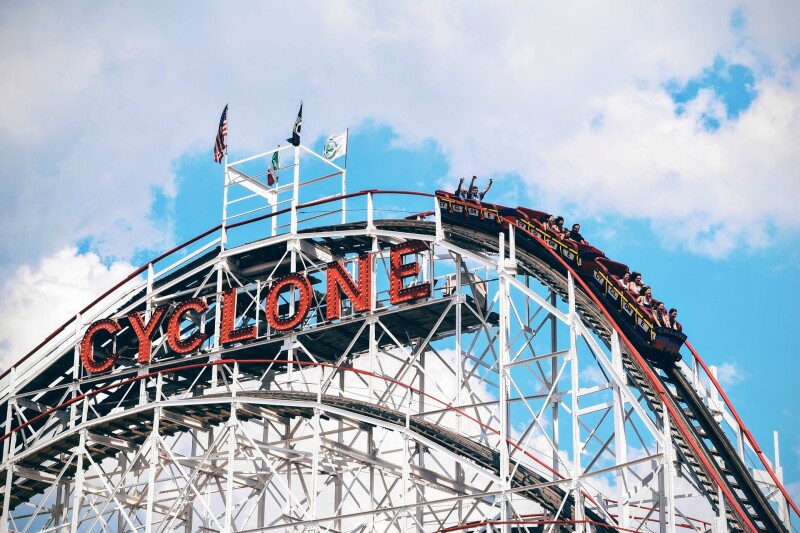
Photo Courtesy Pixabay
During the first few years that The Cyclone operated, a midget would zap riders as they were exiting the ride with an electric paddle. However, in the 1950s, this practice would be terminated. By the 1960s, Coney Island attendance had decreased due to increased crime in the area, not enough parking, poor weather, and the post-World War II auto boom.
The Cyclone was sold to the New York City Department of Parks and Recreation in 1965. In 1972, the city of New York had made plans to expand the New York Aquarium, which would involve destroying The Cyclone. A “Save the Cyclone” campaign was initiated in order to oppose the demolition. City officials eventually came to the conclusion that the demolition of The Coney Island Cyclone would be seen as “potentially disastrous to Coney Island’s economy.”
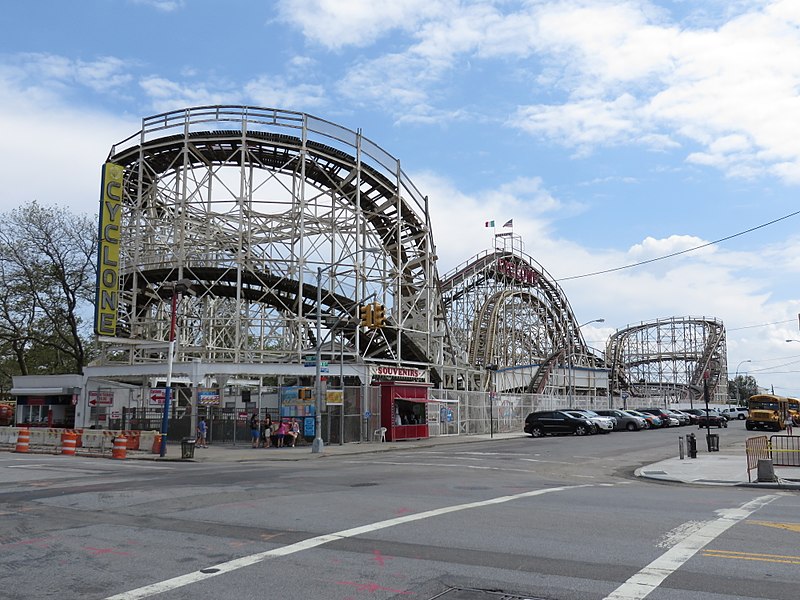
Looking at The Coney Island Cyclone from Surf Avenue Photo Courtesy Wikimedia Commons
The owners of the Astroland amusement park won the lease to The Coney Island Cyclone after they bid an annual fee of $57,000, outbidding many other companies. Astroland spent an additional $60,000 in refurbishment fees on The Cyclone and reopened the iconic ride on July 3, 1975. As of 2010, The Coney Island Cyclone costs $10 per ride. Today, The Coney Island Cyclone is a thrilling ride to experience when visiting Coney Island.
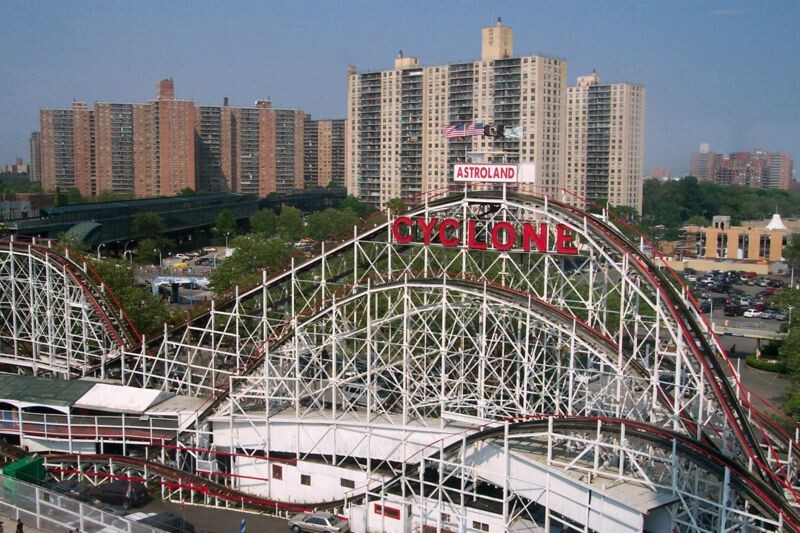
Photo Courtesy Wikimedia Commons
The Original Luna Park (Coney Island, 1903)
Luna Park creators, Frederic Williams Thompson and Elmer “Skip” Dundy, created a ride called “A Trip to the Moon,” which was part of the “Pan-American Exposition” in Buffalo, New York. The ride was built for Steeplechase Park in 1901, but became the center of Luna Park in 1903. The airship (which was the main part of the ride) was “Luna” which is the Latin word for the moon. It is assumed that Luna Park was named after the airship ride and Dundy’s sister (who lived in Des Moines, Iowa), Luna Dundy Newman. George C. Tilyou invited Thompson and Dundy to move their ride to Steeplechase Park for the 1902 season. Thompson and Dundy kept their ride at Steeplechase Park for only one season after finding out that when they would renew their contract with Tilyou, their take of profits would be cut by 20%.
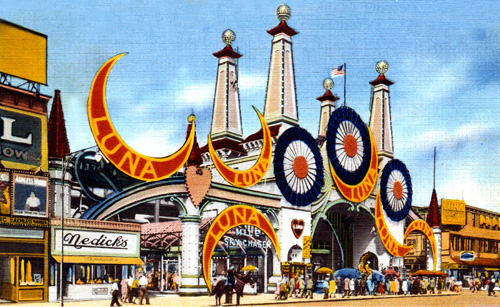
Vintage postcard image depicting entrance to the Original Luna Park, Coney Island Photo Courtesy Wikimedia Commons
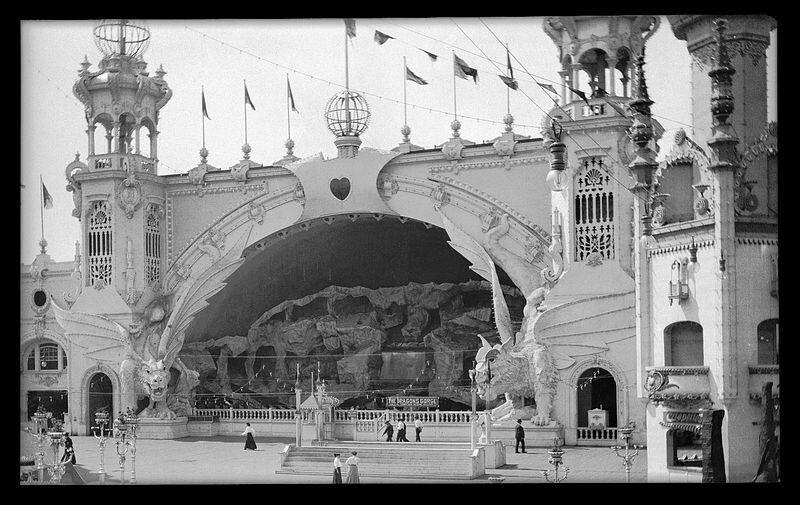
The Dragon’s Gorge at Luna Park, whose fire in 1944 led to Luna Park’s closure Photo Courtesy Eugene Wemlinger/Brooklyn Museum/Wikimedia Commons
By the end of the 1902 season, Thompson and Dundy purchased the lease for Paul Boyton’s Sea Lion Park (16-acres of land), which started to decline when Steeplechase Park opened. Thompson and Dundy also leased the land next to Sea Lion Park, “where the Elephantine Colossus Hotel stood before it burned down in 1896.” Thompson and Dundy now had all the land north of Surf Avenue, south of Neptune Avenue and between W. 8th Street and W. 12th Street (22 acres) to build a large amusement park. It cost $700,000 (Thompson and Dundy advertised that is cost $1 million) to completely reconstruct Sea Lion Park into Luna Park and expand the attractions. Luna Park called itself “The heart of Coney Island.” Luna Park turned on its lights and opened the gates to a crowd of 60,000 people at exactly 8:05 pm on May 16, 1903. Admission to Luna Park cost ten cents and the more elaborate rides cost patrons 25 cents to ride.
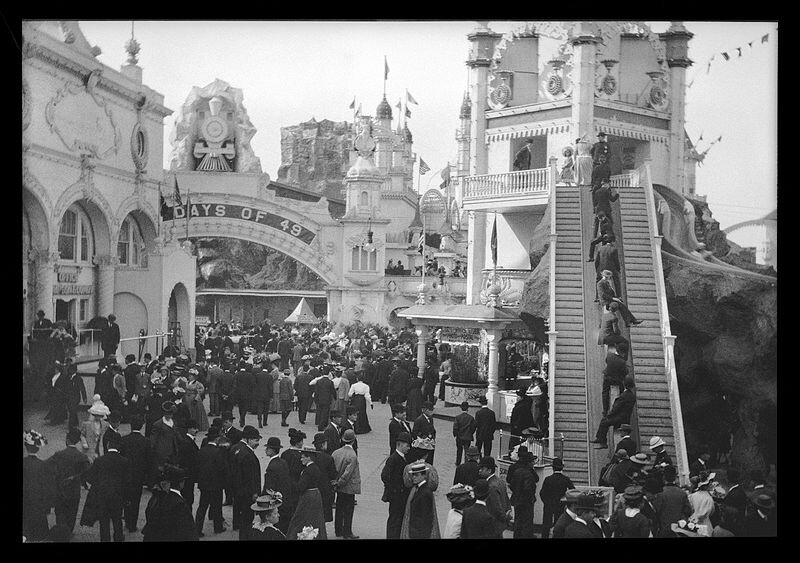
Mechanical escalator to the top of the Helter Skelter ride at Luna Park, 1903 Photo Courtesy Eugene Wemlinger/Brooklyn Museum/Wikimedia Commons
After Dundy died in 1907, Frederic Thompson ran Luna Park until 1912 when he went bankrupt and lost the park to creditors. When the creditors took over ownership of Luna Park, Thompson was able to continue to serve as manager over the park. Luna Park saw a lot of updates and changes over the coming years. The park went into bankruptcy multiple times during The Great Depression and saw a change of owners numerous times. A lot of the rides, shows, and exhibits from the 1939 New York World’s Fair were transferred to Luna Park after the fair closed. A fire demolished most of Luna Park on August 13, 1944 and caused $800,000 in damage. Luna Park never reopened after the fire, due to legal disputes over insurance money. In October 1944, Luna Park was destroyed by another fire. Today, the original Luna Park is the site of an apartment complex called, Luna Park Houses.
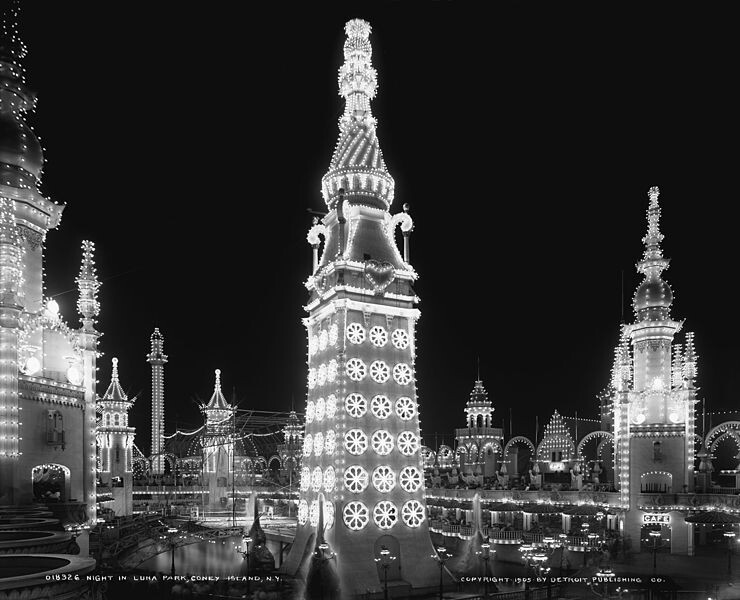
Night in Luna Park, Coney Island (1905) Photo Courtesy Detroit Publishing Co./Wikimedia Commons
Dreamland (Coney Island, 1904)
William H. Reynolds, a former state senator and successful Brooklyn real estate developer, founded Dreamland. Reynolds created and designed Dreamland to compete with the original Luna Park that was created in 1903. Reynolds bought a 15-acre plot of land at Surf Avenue and West Eighth Street. After purchasing the land, Reynolds used political power to destroy West Eight Street, so he could extend the lot and build his new amusement park. Dreamland opened on May 15, 1904 and was advertised as being “bigger and more expansive than the neighboring Luna Park.” Dreamland was known for having “high-end entertainment and dramatic spectacles based on morality themes such as ‘The End of the World’ and the Orient Theater’s ‘Feast of Beshazzar and the Destruction of Babylon.'” Dreamland also showcased “elegant architecture, pristine white towers, and some educational exhibits along with the rides and thrills.” Dreamland offered many fun attractions including a railway called “Coasting Through Switzerland” that passed through a Swiss alpine landscape; Venetian canals with gondolas and a “human zoo” called “Lilliputian Village” where patrons could see “three hundred dwarf inhabitants.” Dreamland offered rides that were mere imitations of the rides over at Luna Park. This led to Dreamland’s struggle to keep afloat.
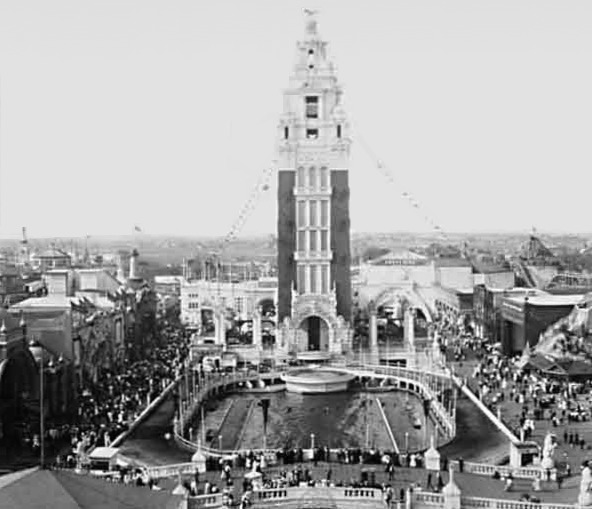
The lagoon and tower at Dreamland Park, Coney Island, Brooklyn, New York, 1907. Photo Courtesy Wikimedia Commons
Dreamland had an attraction called Hell Gate, where patrons took a boat ride on rushing waters though dim caverns. On the night before opening day of the 1911 season, Hell Gate was given last-minute repairs, as a leak in the ride had to be caulked with tar. During the repairs (which were taking place at around 1:30 am on May 27, 1911) the light bulbs in the ride exploded due to an electrical malfunction and a ride worker accidentally kicked over a bucket of hot pitch and within moments Hell Gate went up in flames. The fire spread fast throughout Dreamland, as all the buildings were made of thin strips of wood and were covered with a mixture of plaster of Paris and hemp fiber. There was a high-pressure water pumping station nearby, but it wasn’t working that night. The fire was never extinguished and Dreamland went up in flames and was never rebuilt. Almost ten years after the fire destroyed Dreamland, Reynolds used his political connections to have New York City purchase the land that Dreamland once stood upon. The city bought the land (which was valued at $1.5 million) for $1.8 million.
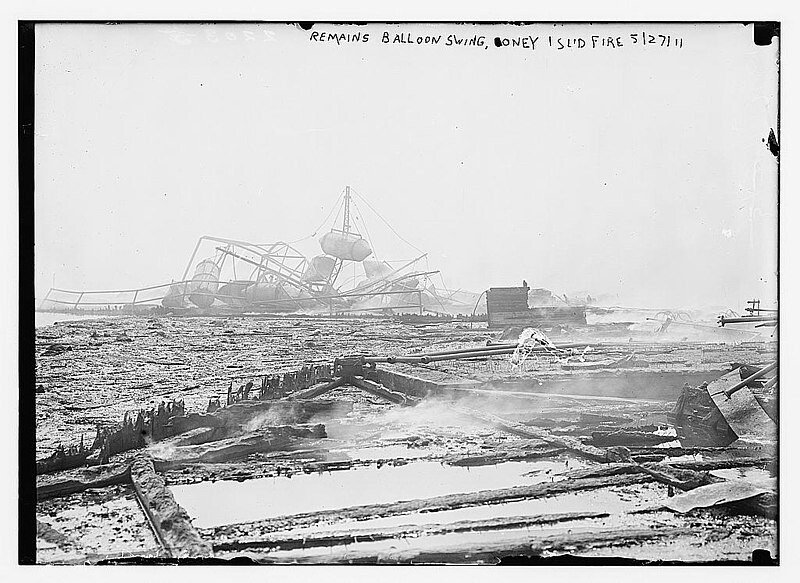
Remains of balloon swing after the Dreamland/Coney Island fire in 1911. Photo Courtesy Wikimedia Commons
Astroland (Coney Island, 1962)
Astroland opened at Coney Island in 1962 under ownership of Dewey Albert and Herman Rapps (Albert and Rapps formed Coney Island Enterprises in 1955 with friends Nathan Handwerker, Sidney Robbins and Paul Yampo.) Astroland was intended to be a “space-age” theme park with a futuristic vibe. Ironically, visiting Astroland in the 21st-century was like stepping back into the past.
In June 1975, Astroland became the new operator of The Coney Island Cyclone. On July 12, 1975, Astroland was hit by an early morning fire, which destroyed most of the park. Luckily, Rapps and Albert were able to rebuild the park and repair the damage done by the fire. Astroland was almost sold by the Albert family for $30 million to Thor Equities, a company that had planned to redesign Astroland into a $1.5 billion dollar year-round resort. The Albert family had agreed to sell Astroland to Thor Equities, as long as the Albert family would continue to operate The Coney Island Cyclone.
Astroland was set to have a grand re-opening on March 16, 2008, but that didn’t work out. Astroland would permanently close on September 7, 2008, after Thor Equities and the Albert family couldn’t come to an agreement on selling terms. It also didn’t help that the Albert family missed the deadline to reply to Thor Equities’ offer. Astroland was purchased by Thor Equities (after the park officially closed) and was replaced by a new amusement park called Dreamland in 2009. Dreamland was then replaced with an even newer amusement park called Luna Park in 2010 (named after Brooklyn’s original, well-known Luna Park that opened in 1903.)
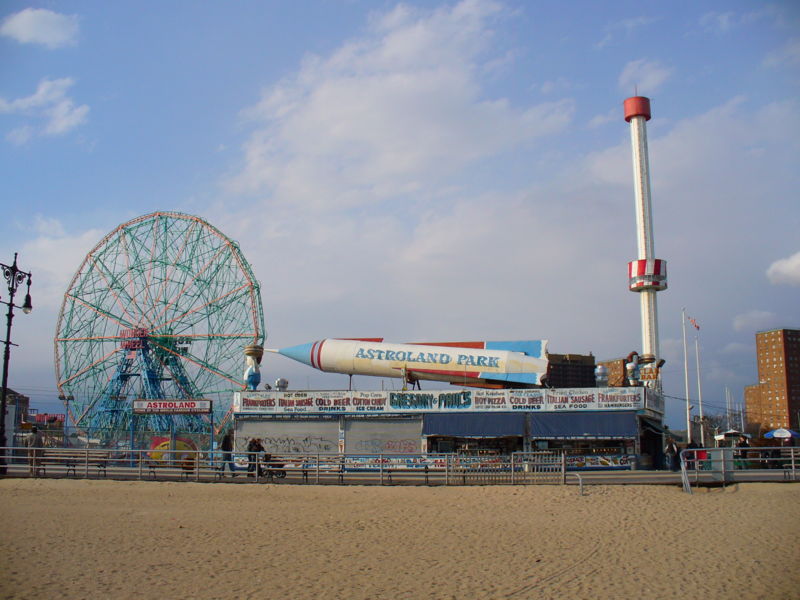
Astroland Photo Credit: David Shankbone Photo Courtesy Wikimedia Commons
Luna Park (Coney Island, 2010)
Luna Park (2010) was built on the land that its predecessors (Astroland and Dreamland) originally sat upon. Luna Park officially opened on May 29, 2010. Luna Park was named after the original Luna Park that opened in 1903. Luna Park (2010) is an extremely popular amusement park on Coney Island.
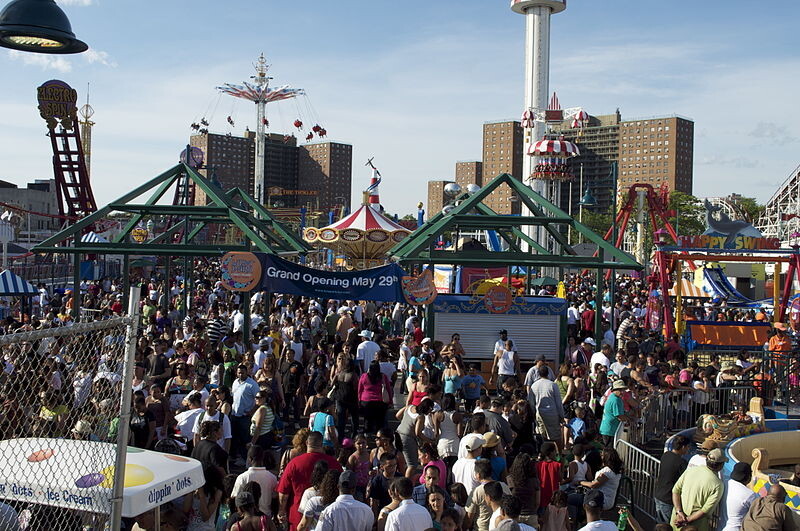
Luna Park Opening Weekend 2010 Photo Courtesy Wikimedia Commons
Luna Park’s success was thanks to the mayor of New York City, Mayor Bloomberg and Brooklyn Borough President, Marty Markowitz, who formed the Coney Island Development Corporation (CIDC.) When constructing the entrance for present-day Luna Park, it was decided that the entrance would be designed as a direct influence of the original 1903 Luna Park.
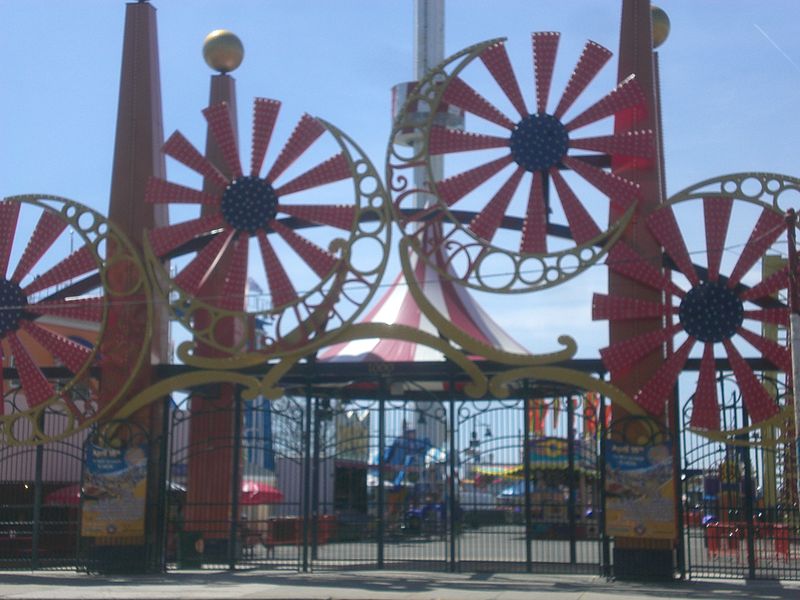
Luna Park Entrance Photo Courtesy Wikimedia Commons
Luna Park is the only area in Coney Island where visitors may not use cash to ride rollercoasters. Park patrons are required to buy Luna Park Cards and use the credits from the card or purchase an unlimited ride wristband that allows unlimited rides for 4 hours on select rides. Luna Park is decorated with The Coney Island “Funny Face” logo, which has been around for hundreds of years. The logo was created and used as a promotion for Coney Island when George C. Tilyou opened Steeplechase Park. Some of Luna Park’s most popular rides include The Coney Island Cyclone, The Tickler Ride, The Thunderbolt and The Soarin’ Eagle.
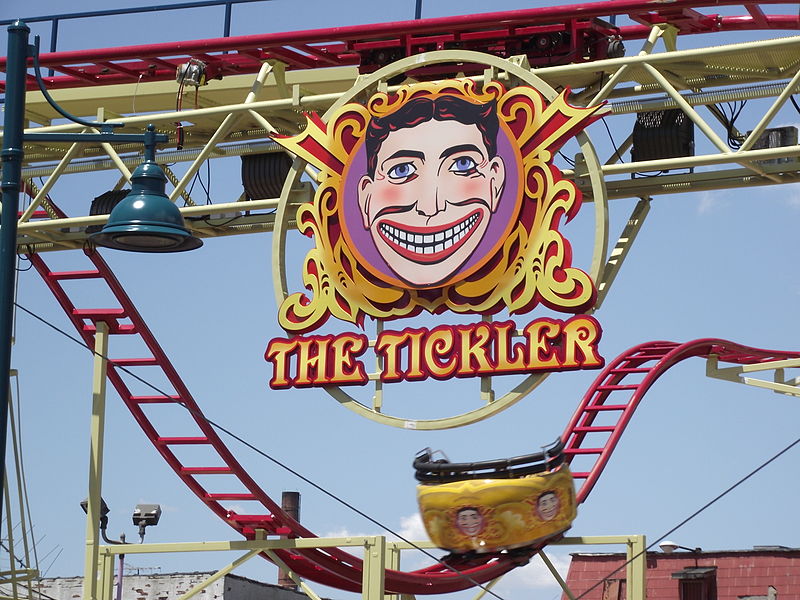
The Tickler Ride (and the Coney Island Funny Face) Photo Courtesy Wikimedia Commons
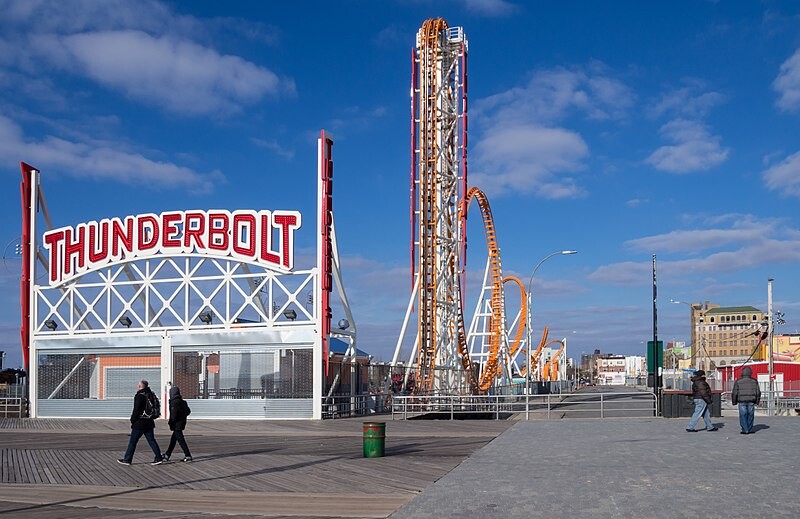
Thunderbolt at Coney Island Photo Courtesy Wikimedia Commons
Deno’s Wonder Wheel Amusement Park
Deno’s Wonder Wheel Amusement Park is a family owned amusement park at Coney Island. The park includes five adult rides, 16 “kiddie” rides, and 12 family rides. The park was named after its main attraction, the Wonder Wheel, which is a 150-foot eccentric wheel that was built in 1920. Deno’s Wonder Wheel Amusement Park “overlooks the Atlantic Ocean and Riegelmann Boardwalk along the Coney Island beach.”
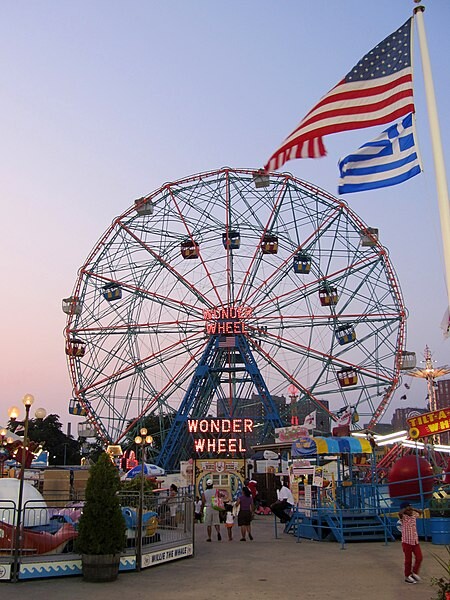
Deno’s Wonder Wheel Amusement Park at Coney Island Photo Courtesy Wikimedia Commons
In 1989, the New York City Landmarks Preservation Commission classified The Wonder Wheel as an official landmark. The Wonder Wheel opened in 1920, predating the amusement park. The Wonder Wheel was designed by Charles Hermann and built by Herman Garms in 1918-1920, with the help of the Electric Ferris Wheel Company. The Wonder Wheel was the tallest attraction at Coney Island until the 250-foot tall attraction Parachute Jump was constructed (which is now defunct.) The Wonder Wheel was the only attraction at the amusement park until the Spook-a-Rama (an indoor dark ride) was built in 1955.
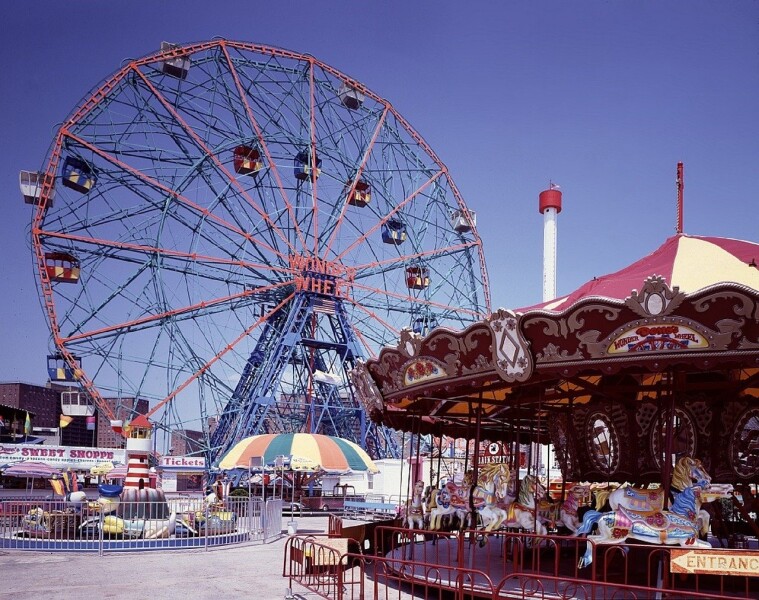
Photo Courtesy Pixabay
Denos Vourderis also opened up a restaurant called the Anchor Bar & Grill on the property. There was another small amusement park in the area designed for children, called Ward’s Kiddie Park, which was owned by John Curran and built in 1950. Denos eventually purchased the kiddie park from Curran in 1976 and in 1983, purchased the Wonder Wheel and Spook-a-Rama from Fred Garms and Walter Kerner Sr. Today, Deno’s Wonder Wheel Amusement Park caters to children, as most of its rides are kiddie rides. Deno’s Wonder Wheel Amusement Park has been operated by Denos sons, Dennis and Steve, since Denos Vourderis passed away in 1994.
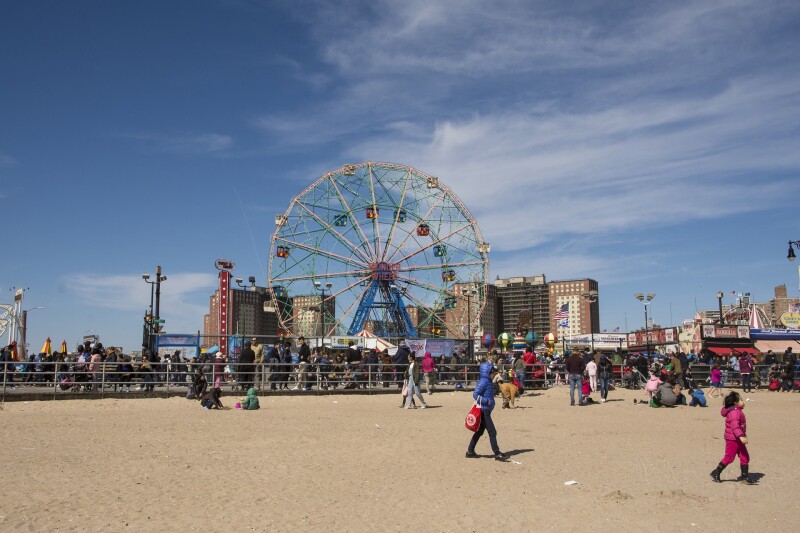
Photo Courtesy Pixabay
Totonno’s Pizzeria Napolitano
The founder of Totonno’s Pizzeria Napolitano, Antonio “Totonno” Pero, started out as an employee at Lombardi’s pizzeria (established in 1905) on Spring Street in New York City’s Little Italy. While working at Lombardi’s pizzeria, Antonio started selling “tomato pies cooked in a coal oven and wrapped in paper and tied with a string.” Antonio left Lombardi’s pizzeria in 1924 and opened up his own pizzeria on Coney Island called Totonno’s.
Today, Louise Criminieri owns Totonno’s Pizzeria Napolitano. Totonno’s is well known for “its lines out the door, longevity, and delicious food.” Totonno’s Pizzeria is proud to still be making pizza the same way since 1924 and “is considered among the best in the country by people who have dedicated their lives to the subject [of pizza making.]” Totonno’s uses a coal fired brick oven to cook its pizzas (which is rare these days, as only a handful of other pizzerias cook their pizza pies in a coal fired brick oven.) Totonno’s uses a coal fired brick oven, because the oven passes on its distinctive flavor to the pies that are baked in it. New coal ovens are unable to pass current environmental laws in New York, “but the old ovens are grandfathered in as long as the business remains open.”
The original Totonno’s Pizzeria Napolitano was damaged by a fire in 2009, but shortly reopened afterwards. In October 2012, (along with many other restaurants on Coney Island), Hurricane Sandy caused damage to Totonno’s. Fortunately, Totonno’s was able to reopen in January 2013. Totonno’s Pizzeria Napolitano has been featured on many television shows including Ugly Delicious, Somebody Feed Phil, and The Pizza Show. Totonno’s Pizzeria Napolitano is Eater New York’s #1 recommended restaurant to dine at in Coney Island and is also a recommended restaurant on the official Coney Island tourist information website.
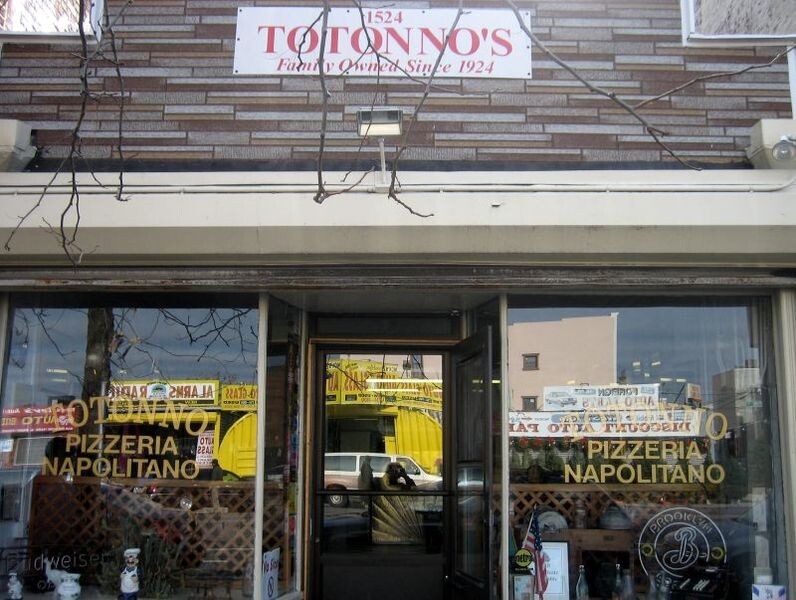
Totonno’s Pizzeria Photo Courtesy Wikimedia Commons
Nathan’s Famous
Nathan’s Famous started out as a nickel hot dog stand in Coney Island in 1916, named after owner, Nathan Handwerker (although the business was started by both Nathan and his wife, Ida.) Ida was the creator of the hot dog recipe that was used, while Ida’s grandmother is credited for creating the secret spice recipe that is mixed in with the hot dogs. Nathan Handwerker was a Jewish immigrant who moved to New York City in 1912 and began working in Coney Island at a restaurant called Feltman’s German Gardens (which was owned at operated by Charles Feltman.) While there are different stories regarding how Nathan’s Hot Dog came to be, Nathan explains that while working a Feltman’s German Gardens, he was persuaded to open up his own restaurant and become a competitor of Feltman’s. Nathan and Ida decided to run their own hot dog stand at Coney Island and invested their life savings of $300 (inflated to $7,000 as of May 2018) into their new business venture.
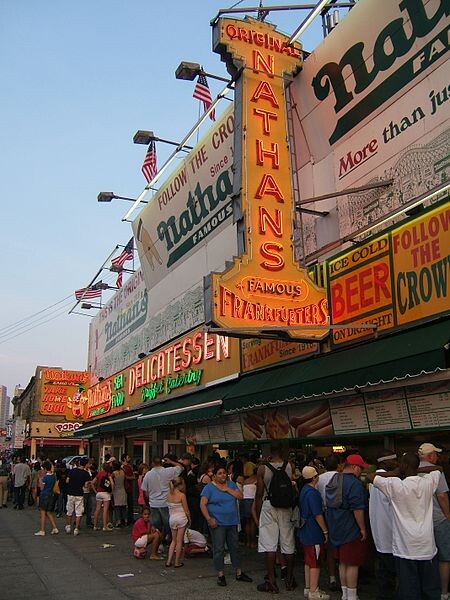
Nathan’s Famous July 2007 Photo Credit: Willyumdelirious/Wikimedia Commons
When Nathan officially opened Nathan’s Famous, hot dogs were sold at 5 cents a dog, which was half of what a hot dog cost over at Feltman’s. During the early days of Nathan’s Famous, Handwerker made sure that men wearing surgeon’s smocks were seen buying hot dogs from his stand, as a way to encourage customers to order from his business. Nathan’s hot dog stand quickly became a very popular place to eat at. Nathan’s Famous started to expand in 1959 with a branch opening on Long Island in Oceanside and in upstate New York in Yonkers, thanks to Nathan’s son, Murray Handwerker. Murray Handweker became president of Nathan’s Famous in 1968, which was also the year that the company went public.
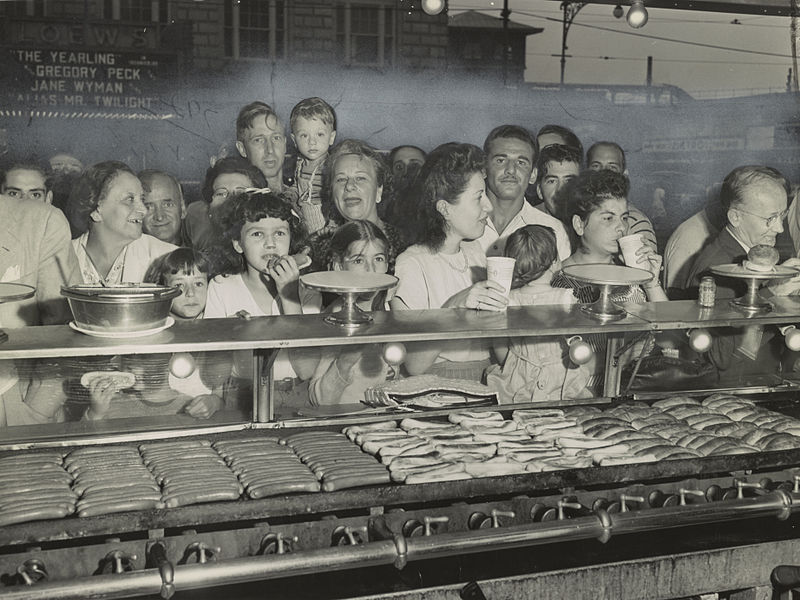
Crowding customers at The Original Nathan’s Famous in 1947 Photo Credit: Al Amuuller Photo Courtesy Wikimedia Commons
In 1987, the Handwerker family sold all locations of Nathan’s Famous to a group of private investors and that started the beginning of the company being franchised. Nathan’s Famous is the official hot dog brand of the New York Mets, New York Yankees, Miami Marlins, and the St. Louis Cardinals. The original Nathan’s hot dog stand that opened in 1916 is still in business at its original site.
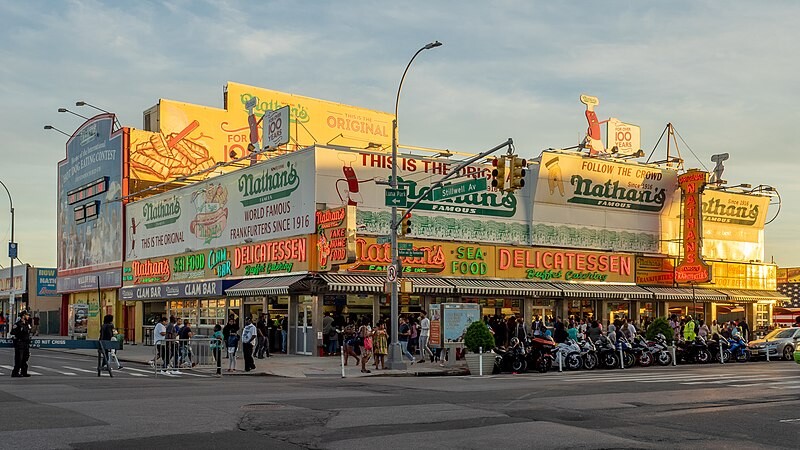
The Original Coney Island branch of Nathan’s Famous Photo Courtesy Ajay Suresh/Wikimedia Commons
The Original Nathan’s (at the corner of Surf and Stillwell Avenues) has been open every day for 365 days a year, with the exception of when the stand was forced to close on October 29, 2012 due to Hurricane Sandy. On May 21, 2013, Nathan’s was able to re-open and resume business. The Original Nathan’s even includes fried frog legs on their menu (a menu item that was added during the 195os.) The Original Nathan’s is the only location where fried frog legs are offered. There is also a second, smaller Nathan’s Famous, which is also located on Coney Island on the Riegelmann Boardwalk. The original Nathan’s Hot Dog stand has held the annual “Nathan’s Hot Dog Eating Contest” every 4th of July since the 1970s, where contestants try to eat as many hot dogs as they can within a 10-minute window.
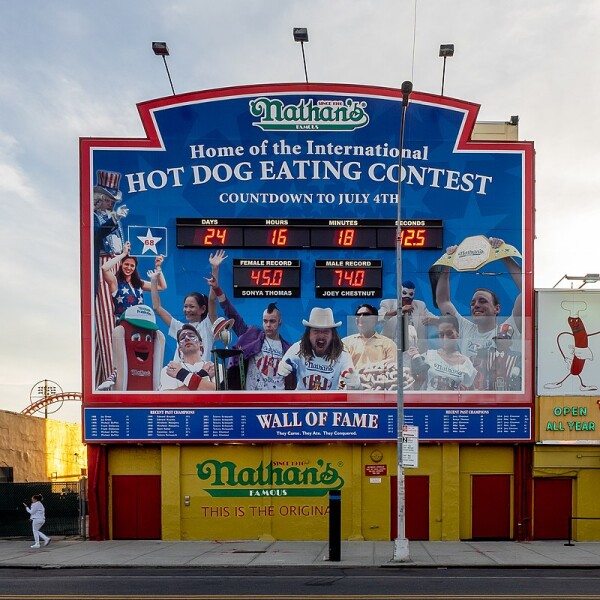
Nathan’s Hot Dog Eating Contest countdown clock Photo Courtesy Ajay Suresh/Wikimedia Commons
Nathan’s Famous is a Coney Island staple and a must-visit restaurant during your next trip to Coney Island. Nathan’s Famous is a recommended restaurant on the official Coney Island tourist information website.

Photo Courtesy Brandon Speakman
Ruby’s Bar and Grill
Ruby’s Bar and Grill has been family owned and operated since the restaurant opened in 1972. Ruby’s is proud to be the oldest bar and grill on the Riegelmann Boardwalk. Ruby’s offers fantastic views all around (the Atlantic Ocean and beach can be seen from the front of the restaurant and Luna Park can be seen from the back of the restaurant.) Ruby’s is proud to have been voted the best dive bar in Brooklyn in 1999, 2002, and 2005.
The menu at Ruby’s varies from simple classics like hamburgers, hot dogs, hot/sweet sausage, and corn dogs to Fried Clams in a Basket, Baby Fried Shrimp in a Basket, Jumbo Fried Shrimp, and Crab Cakes on a Bun. You can also order from a selection of traditional fair food sides like Corn on the Cob, French Fries, Onion Rings, Mozzarella Sicks or Potato Knish. Ruby’s is a terrific beachfront landmark to grab some comfort food at or just sit back with a beer and vibe, while watching the waves go by. Ruby’s Bar and Grill is a recommended restaurant on the official Coney Island tourist information website.
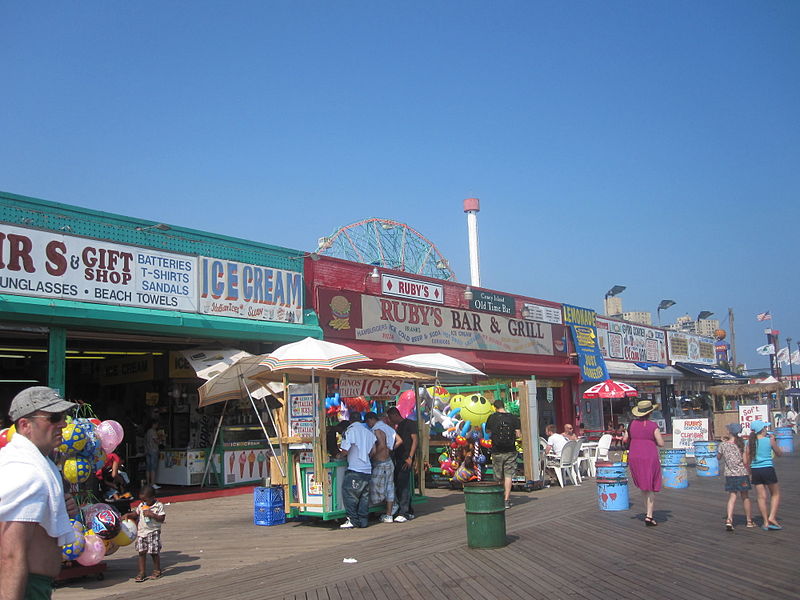
Photo Courtesy Wikimedia Commons
William’s Candy Shop
William’s Candy Shop is one of the oldest and most famous candy shops in New York that has created tasty treats for over 75 years. William’s Candy Shop boasts making some of the freshest candy in the world including Caramel Apples, Caramel Marshmallow Sticks, Caramel Marshmallow Balls, plus an assortment of different types of Lollipops, Fudge, Popcorn, Cotton Candy, and Ice Cream. William’s Candy Shop also caters for large events. William’s Candy Shop is located on Surf Avenue, across from Nathan’s Famous. William’s Candy Shop is the perfect place to get a treat after a carefree day of riding rollercoasters.
Riegelmann Boardwalk
The Riegelmann Boardwalk (known also as the Coney Island Boardwalk) runs 2.7 miles along the southern shore of the Coney Island peninsula. The boardwalk stretches between West 37th Street at the edge of the Sea Gate neighborhood to the west and Brighton 15th Street in Brighton Beach to the east. The Riegelmann Boardwalk connects many of Coney Island’s amusement areas including the New York Aquarium, Luna Park, Deno’s Wonder Wheel Amusement Park, and MCU Park (a minor league baseball stadium.)

Photo Courtesy Pixabay
Development plans for the Riegelmann Boardwalk started in the “late 1890s as a means of uniting the different sections of Coney Island, and as a revitalization project for these areas.” The boardwalk was designed by Philip P. Farley and it officially opened in 1923. The boardwalk was named after Brooklyn Borough President Edward J. Riegelmann, who oversaw its construction. Since its completion, the Riegelmann Boardwalk was become an iconic part of Coney Island. In 2018, the Riegelmann Boardwalk was made a New York City designated landmark.
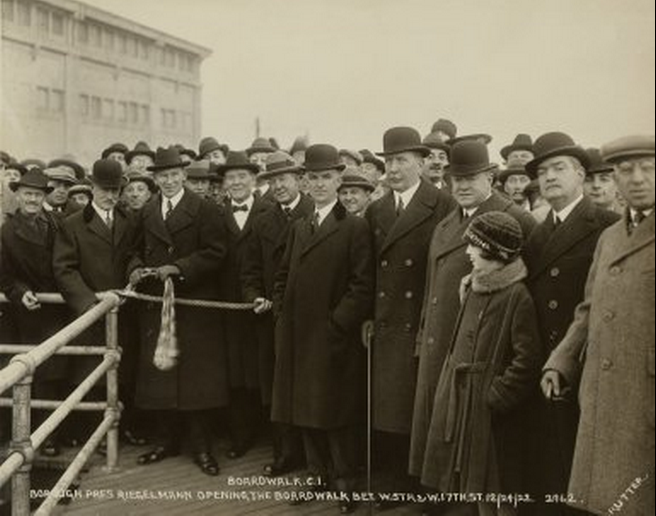
Edward J. Riegelmann (holding the rope in his hands towards the left of the photo) opening the boardwalk between West 5th and West 17th Street in Coney Island in 1922. Photo Courtesy Wikimedia Commons
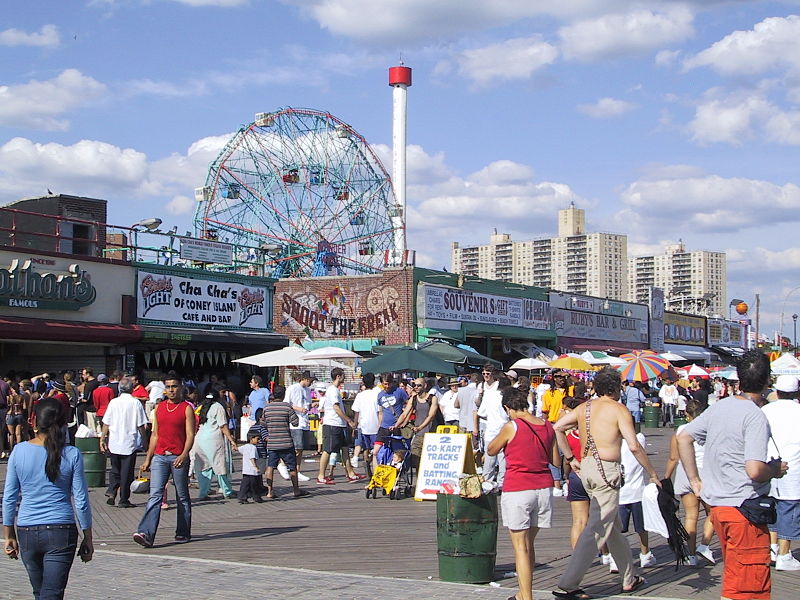
Summer crowds on the Rigelmann Boardwalk Photo Courtesy Wikimedia Commons
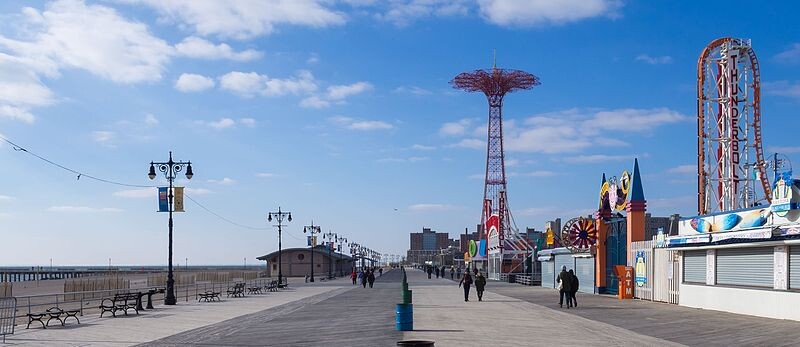
Riegelmann Boardwalk Photo Courtesy Wikimedia Commons
New York Aquarium
The original New York Aquarium opened at Castle Garden in Battery Park, New York on December 10, 1896. By October 31, 1902, the New York Aquarium was home to only 150 specimens of wildlife. It wasn’t until a well-known zoologist, Charles Haskins Townsend, became director of the Aquarium and successfully increased the collections considerably. Townsend is credited for increasing the popularity of the New York Aquarium, as hundreds of thousands of people started visiting the establishment annually, under Townsend’s directorship. Townsend ended up serving as the Aquarium’s director for 30 years. In October 1941, the New York Aquarium was closed down. Many of the sea creatures were “temporarily housed” at the Bronx Zoo, until the new location was built.
The New York Aquarium opened at its new location in Coney Island, Brooklyn on June 6, 1957 and has continued to be a popular attraction for visitors of the area. The New York Aquarium closed for four months starting in March 2020, due to the COVID-19 pandemic in New York City, but was able to re-open and is back in operation. As of 2018, the New York Aquarium consists of five exhibits: Aquatheater; Conservation Hall; Sea Cliffs; Sharks, Rays & Turtles; and Ocean Wonders: Sharks. The original Bathysphere, “a deep sea submarine that made its historic journeys underwater in the 1930s,” is also on display at the aquarium.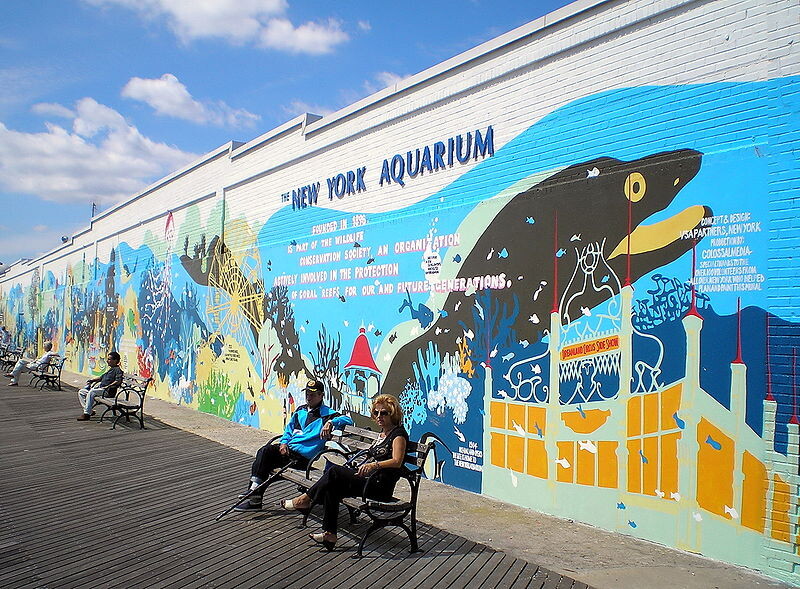
Photo Credit: David Shankbone Photo Courtesy Wikimedia Commons
Coney Island is an exciting place to visit. The beach, Rigelmann Boardwalk, Nathan’s Hot Dogs and the New York Aquarium are open year-round, while the amusement areas, rides and rollercoasters are seasonal and operate on weekends between Easter and Memorial Day, all week long from Memorial Day to Labor Day and then back to weekends from Labor Day to Halloween. For more information on Coney Island, check out the official visitor’s guide.
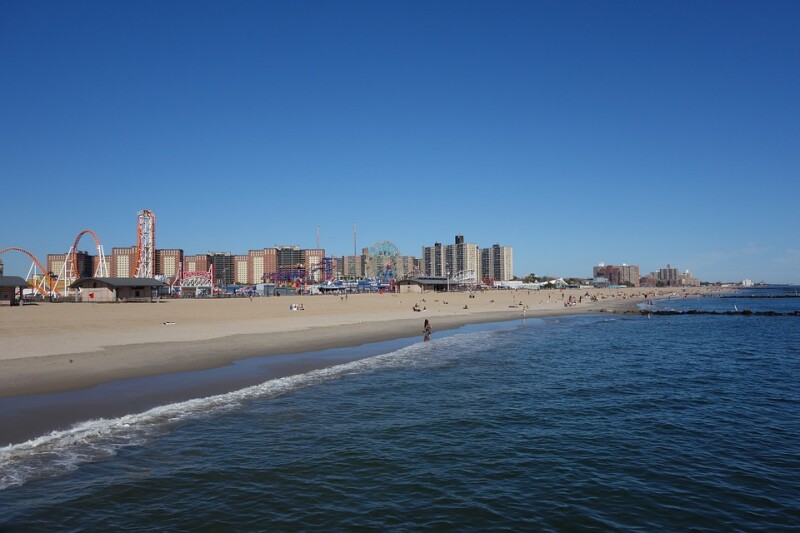
Photo Courtesy Pixabay
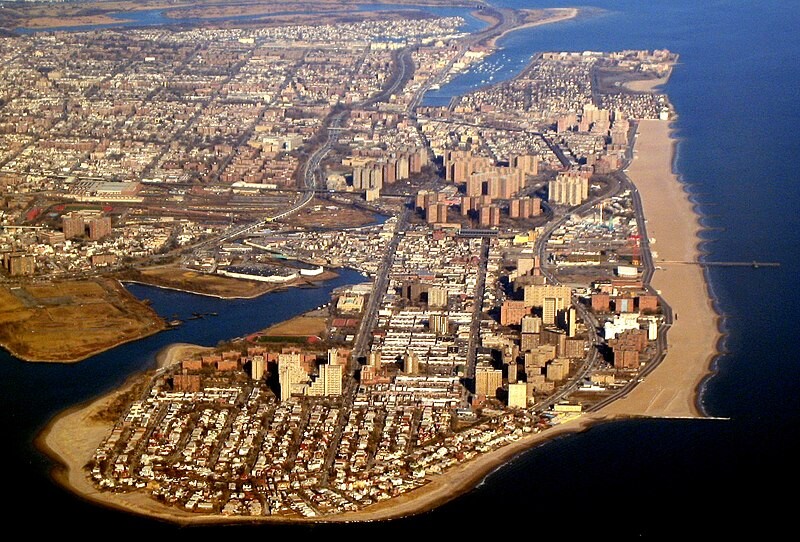
Aerial view of Coney Island Photo Courtesy Wikimedia Commons




